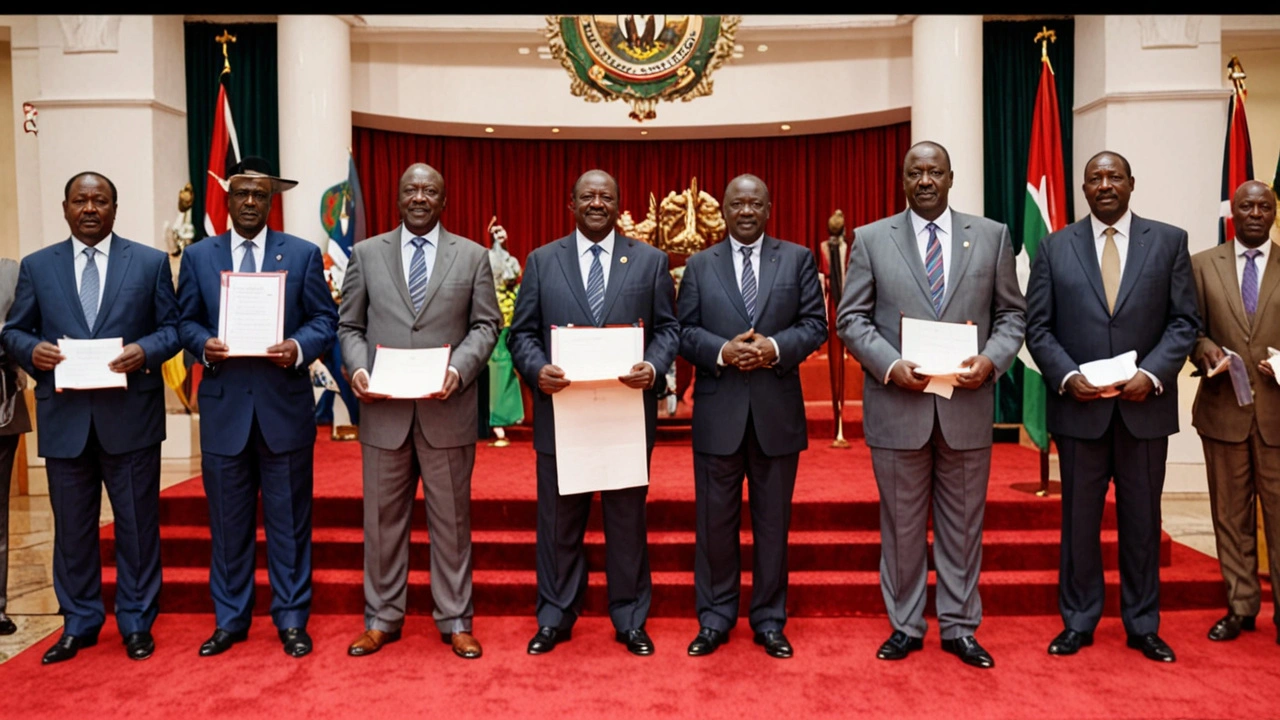Introduction
The political landscape in Kenya has once again been thrust into the limelight as Nairobi Senator Edwin Sifuna staunchly defends Azimio la Umoja leader Raila Odinga’s role in the much-anticipated multi-sectoral dialogue with President William Ruto. The dialogue, which spans six days, aims to address critical concerns raised by Kenya’s youth, a demographic that has recently been vocal in their dissatisfaction with the government’s policies and actions.
Genesis of the Debate
Raila Odinga, a prominent figure in Kenya’s political scene, has been a focal point for both admiration and criticism. His decision to participate in the upcoming dialogue, in the midst of backlash from the younger generation, particularly Gen-Z, has sparked a heated debate. The younger population, having witnessed the controversies surrounding the recent Finance Bill and subsequent street protests, perceive Raila's engagement with Ruto as a potential betrayal of their grievances.
In defense of Raila’s decision, Senator Edwin Sifuna emphasized that the multi-sectoral dialogue is not merely a political maneuver but a genuine attempt to address and resolve the myriad issues plaguing the country, particularly those affecting the youth. Sifuna elaborated that the dialogue aims to create a platform where concerns can be openly discussed and constructive solutions can be formulated.

The Structure of the Dialogue
Announced by President Ruto, the dialogue will take place over six days and will feature a diverse group of 150 members. This eclectic group will include 50 young individuals, ensuring that the voices of the youth are well-represented. The remaining 100 participants will be drawn from religious institutions, civil society, professional organizations, political parties, and various other stakeholders, reflecting a broad spectrum of the Kenyan society.
One notable aspect of this dialogue is its adherence to the government’s policy of austerity. Participants will bear their own costs, a move that aligns with the current economic constraints and demonstrates a commitment to minimizing public expenditure during the event. Such measures are intended to underscore the earnest approach of the government towards resolving the crisis without imposing additional financial burdens on the nation.
Gen-Z's Concerns and Criticisms
The younger generation’s discontent primarily stems from the controversial Finance Bill, which many believe exacerbates socioeconomic inequalities and places undue strain on the already struggling populace. Furthermore, the street protests that ensued were a stark indicator of the growing frustration among the youth, who feel their futures are at risk due to poor governance and economic mismanagement.
In light of these events, the notion of Raila Odinga engaging in dialogue with President Ruto was met with skepticism and outright disapproval by many young Kenyans. They viewed the potential handshake and collaboration as a deviation from the opposition’s stance, which they hoped would champion their cause more robustly.

Sifuna’s Justification
Senator Sifuna’s justification for Raila’s participation is rooted in the belief that dialogue is indispensable for national healing and progress. He argued that the multi-sectoral convention provides a unique opportunity for various sectors to come together and deliberate on solutions that are inclusive and reflective of the nation’s diverse needs. By bringing together representatives from different backgrounds, the dialogue aims to foster a holistic approach to addressing Kenya’s challenges.
Moreover, Sifuna pointed out that the involvement of 50 young people in the dialogue is a testament to the recognition of the youth’s pivotal role in shaping the country’s future. He urged the Gen-Z demographic to view this as a chance to have their voices heard at the highest levels of governance and to contribute actively to the discourse on critical national issues.
The Road Ahead
As Kenya gears up for this significant dialogue, the stakes are undeniably high. The country faces numerous challenges, from economic instability to social unrest, and the need for a unified approach to problem-solving has never been more urgent. The success of the dialogue hinges on the willingness of all participants to engage in good faith and to prioritize the collective well-being of the nation over individual or partisan interests.
With the participation of key figures like Raila Odinga and the support of influential leaders such as Senator Sifuna, there is a palpable sense of anticipation and hope that this dialogue could pave the way for meaningful reforms and solutions. For many Kenyans, especially the youth, this represents a critical juncture where their aspirations and concerns can be articulated and addressed in a structured and impactful manner.

Conclusion
In conclusion, while the inclusion of Raila Odinga in the upcoming multi-sectoral dialogue has sparked controversy, primarily from the Gen-Z demographic, it also presents an invaluable opportunity for comprehensive and inclusive discussions. Senator Edwin Sifuna’s defense of Raila’s engagement underscores the importance of dialogue in navigating Kenya’s complex socio-political landscape. As the nation awaits the outcomes of this important event, the hope remains that it will foster unity, address pressing issues, and chart a course towards a more equitable and prosperous future for all Kenyans.


